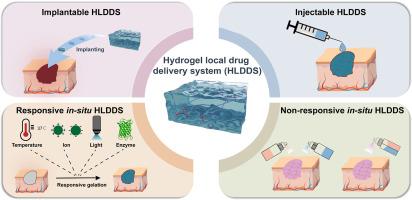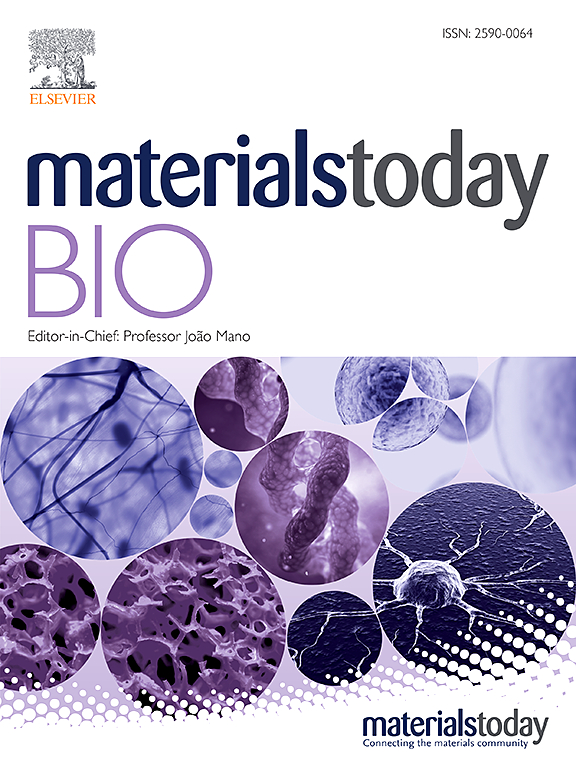Hydrogel local drug delivery systems for postsurgical management of tumors: Status Quo and perspectives
IF 8.7
1区 医学
Q1 ENGINEERING, BIOMEDICAL
引用次数: 0
Abstract
Surgery is one of the primary treatments for solid tumors. However, the incomplete resection of tumor cells and the immunosuppressive microenvironment make the issue of postsurgical tumor recurrence a great challenge. Furthermore, a wide range of requirements, including ensuring effective hemostasis, implementing prophylactic measures against infection, and promoting wound healing, were also raised in the postsurgical management of tumors. To fulfill these demands, multiple hydrogel local drug delivery systems (HLDDS) were developed recently. These HLDDS are expected to offer numerous advantages in the postsurgical management of tumors, such as achieving high local drug concentrations at the lesion, efficient delivery to surgical microcavities, mitigating systemic side effects, and addressing the diverse demand. Thus, in this review, a detailed discussion of the diverse demands of postsurgical management of tumors is provided. And the current publication trend on HLDDS in the postsurgical management of tumors is analyzed and discussed. Then, the applications of different types of HLDDS, in-situ HLDDS and non-in-situ HLDDS, in postsurgical management of tumors were introduced and summarized. Besides, the current problems and future perspectives are discussed. The review is expected to provide an overview of HLDDS in postsurgical management of tumors and promote their clinical application.

用于肿瘤术后治疗的水凝胶局部给药系统:现状与展望
手术是实体瘤的主要治疗方法之一。然而,肿瘤细胞的不完全切除和免疫抑制微环境使肿瘤术后复发问题成为一个巨大挑战。此外,肿瘤术后管理还提出了一系列要求,包括确保有效止血、实施预防感染措施和促进伤口愈合。为了满足这些要求,最近开发出了多种水凝胶局部给药系统(HLDDS)。这些水凝胶局部给药系统有望在肿瘤术后治疗中发挥诸多优势,如在病灶处实现高浓度局部给药、向手术微腔高效给药、减轻全身副作用以及满足多样化需求等。因此,本综述详细讨论了肿瘤术后治疗的多样化需求。并分析和讨论了目前 HLDDS 在肿瘤术后治疗中的发表趋势。然后,介绍并总结了不同类型的 HLDDS(原位 HLDDS 和非原位 HLDDS)在肿瘤术后治疗中的应用。此外,还讨论了当前存在的问题和未来展望。本综述旨在概述 HLDDS 在肿瘤术后治疗中的应用,并促进其临床应用。
本文章由计算机程序翻译,如有差异,请以英文原文为准。
求助全文
约1分钟内获得全文
求助全文
来源期刊

Materials Today Bio
Multiple-
CiteScore
8.30
自引率
4.90%
发文量
303
审稿时长
30 days
期刊介绍:
Materials Today Bio is a multidisciplinary journal that specializes in the intersection between biology and materials science, chemistry, physics, engineering, and medicine. It covers various aspects such as the design and assembly of new structures, their interaction with biological systems, functionalization, bioimaging, therapies, and diagnostics in healthcare. The journal aims to showcase the most significant advancements and discoveries in this field. As part of the Materials Today family, Materials Today Bio provides rigorous peer review, quick decision-making, and high visibility for authors. It is indexed in Scopus, PubMed Central, Emerging Sources, Citation Index (ESCI), and Directory of Open Access Journals (DOAJ).
 求助内容:
求助内容: 应助结果提醒方式:
应助结果提醒方式:


